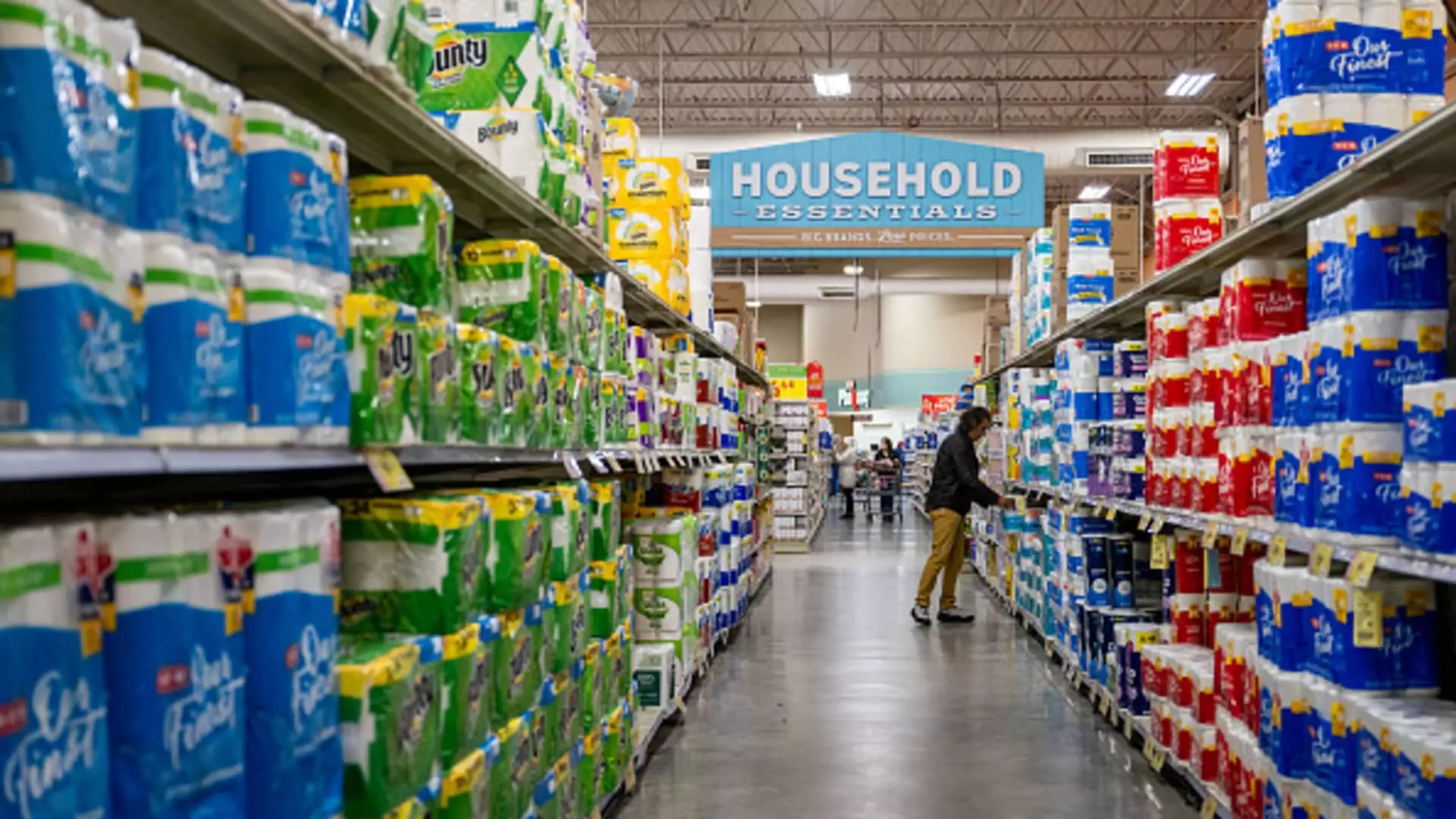As consumers head to their local grocery stores in the coming weeks, they may not realize the financial storm brewing behind the scenes thanks to the Trump administration’s recent tariff policies. With an increase in import duties set to affect over 180 nations, shoppers can expect notable price hikes on staples like coffee, bananas, vanilla, and essential household items such as toilet paper. The intention behind these tariffs is ostensibly to bolster American manufacturing, but in practice, they may bring unintended consequences to the very consumers they aim to protect. Economic theories may paint a rosy picture of a resurgent national manufacturing sector, but the reality is far from it.
The administration’s “America First” mantra is a noble aspiration, but this blanket approach to tariffs seems to disregard the complexities of commerce and supply chain dynamics. Numerous critical ingredients required for food and household items are either unavailable domestically or cannot be produced at the scale needed to meet consumer demands. This brings about the perplexing irony of a trade policy that may end up harming American consumers more than it supports local manufacturers.
Are We Preparing for a Price Explosion?
The burdens of tariffs won’t just affect high-priced luxury goods; they will trickle down to everyday items that people rely on for their daily lives. For instance, coffee and bananas, which have become quintessential grocery items for many Americans, are now poised to see substantial price increases. According to industry insights from the Consumer Brands Association (CBA), the U.S. is the world’s largest importer of bananas, with about 40% sourced from Guatemala alone. A 10% tariff on these imports will certainly be passed down to consumers already grappling with inflation.
Moreover, the spike in vanilla prices will hit consumers hard. Being the second most expensive spice globally, it already places a considerable strain on manufacturers and bakers alike. The impending 47% tariff on vanilla imports from Madagascar poorly reflects our current agricultural limitations. The irony lies in the notion that boosting domestic production is key while infringing upon vital imports without addressing the root causes of our shortages.
Misguided Policies and Their Consequences
One of the most perplexing aspects of the current tariff strategy is its lack of targeted exemptions. Commerce Secretary Howard Lutnick’s dismissal of such ideas shows a concerning detachment from the ramifications everyday citizens will face. For companies dependent on specific imports—like oats, palm oil, and even essential hygiene products—these tariffs threaten to lead to unsustainable cost increases. The USDA has already indicated a troubling decline in U.S. oat production, making our reliance on Canadian imports all the more precarious.
Instead of bolstering domestic production, these tariffs appear to be an ill-conceived approach to a multifaceted economic problem. It highlights a blatant failure to grasp the intricate webs of global trade and, worse, a poor understanding of how it interlinks with local economies. The notion that we can isolate ourselves from global supply chains is not only naïve but economically reckless.
Consumer Backlash or Investor Support?
Interestingly, despite the impending burden on shoppers, financial markets responded differently to the tariff announcements. Stocks of consumer staples such as Procter & Gamble and Coca-Cola experienced a boost as investors sought refuge from riskier investments. This deviation signals a disconnect between corporate investors and the typical American household. While investors may see opportunity in the relative safety of household brands, consumers are stuck with the unfortunate reality of their grocery bills climbing perilously high.
As companies look to adjust pricing strategies and explore cost-saving measures, consumers remain in the dark, caught in a web of rising prices and diminishing purchasing power. The fundamental challenge of these tariff policies is affordability; even as corporations navigate increased costs, they often pass these onto consumers, exacerbating the implications of already heightened inflation.
The current approach to tariffs raises critical questions about the efficacy of trade policies that prioritize national interests at the expense of economic realities. While the motivation behind these tariffs might be framed as protective, the collateral damage inflicted upon everyday Americans should prompt a reevaluation of such strategies. As we venture further into 2023, it’s imperative that policymakers recognize the balance between promoting domestic manufacturing and ensuring the well-being of their constituents. The tug-of-war between these two interests must serve as an urgent call to integrate thoughtful, nuanced approaches to earnestly address the complexities of our global economy while safeguarding American livelihoods.

Leave a Reply